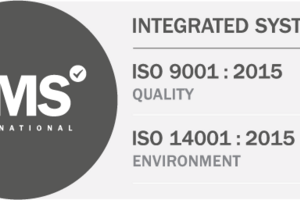18 September 2018
Warehouse lighting: LED systems can help drive efficiency
It is only logical that any serious discussion about reducing energy consumption needs to place significant emphasis on the industrial sector, such its inherent capacity for both tremendous waste and great efficiency. But increasingly that element of the debate is being backed up by academic studies, government and energy organisation initiatives, and national and international targets.
With scrutiny on industry’s use of energy only destined to become more intense, it makes sense for warehouse operators to review their use of core building systems – in particular lighting – with an awareness of this broader context…
1) There are more and more energy-related schemes that can benefit operators
Getting onboard with energy efficiency in a concerted way can have several benefits that may not be immediately obvious, not least improved access to the growing number of energy-related funding schemes.
One recent example is the Carbon Trust’s four-year programme to finance demonstration projects that will help reduce implementation costs and extend the range of options available to industrial firms in terms of energy efficient systems. The scheme has seen between £150,000 and £1m apiece being given to ‘clean tech’ firms and industrial companies keen to highlight energy-saving technologies.
2) Being regarded as an energy efficient operation can lead to increased activity levels
When an organisation like the UK Green Building Council says that improving the energy efficiency of households and industry should be among the top infrastructure priorities, you can be sure that awareness of organisations’ use of energy is on the verge of becoming substantially more acute.
This is as applicable to warehouses as any other part of industry, and it therefore follows that those businesses who are perceived as having their ‘houses in order’, energy-wise, will attract more business.
3) Any review of energy needs to put lighting front and centre
There is no getting away from the fact that lighting can make all the difference in determining the energy efficiency of a warehouse. In fact, lighting can account for as much as 80% of its total energy bill, while converting from the older fluorescent lighting types to the latest LED systems can reduce bills by up to 60%.
The scale of initial investments will obviously be determined by the size and requirements of a particular facility, but even with the largest deployments RoI (return on investment) periods of just a few years are by no means uncommon. And then, of course, there are the savings that will result from the reduction in replacement and maintenance expenses accruing from LED’s longer life-cycles.
4) Implement LED lighting with sensor technology for the best results
Replacing traditional lighting with LED products is only one part of the equation, given that using occupancy sensors and daylight sensors can reduce electricity use by 30-40%, according to the Carbon Trust (1).
With this aspect ‘sorted’ the smarter warehouse operator will move on to think about other key building systems, notably heating, as they finesse a facility that can satisfy both customer and broader public expectations.
Source: (1) https://www.carbontrust.com/resources/guides/energ...


